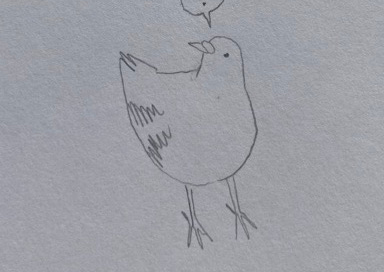I was smiling on a train heading toward Lithgow. I’m rereading a passage in Walter Benjamin’s On Language as Such and on the Language of Man where Benjamin asks the reader: who does the lamp communicate with? I asked myself another question: what does the language of the lamp sound — or perhaps look — like? To consider this world Benjamin was imagining when he wrote this text is to consider the possibility of accessing the language of things as well as how one would speak directly to objects. Downriver on this stream of thought I ask myself what I would like to say to the lamp on my bedside table. I dream about what it would think as the object that bears witness to both light and dark moments of mine. Would a lamp hold judgements against me? Perhaps rather than a lamp it is easier to imagine the language of a fox or a mountain. I close my eyes and float further downstream past conscious recollection.
I’m taken to Noordwijk Aan Zee where a fox lives deep within my memories. I remember an airport delay, the drive from Amsterdam, and arriving at a hotel in this city on an October night in 2013. I witnessed the fox crossing the car park toward the beach, lit by headlights cast by the taxi. Tightening my eyes shut, I throw a net deeper into memory to catch any kind of cue to unlock the language of the fox.
Minutes passed and I had resigned myself to the fact that I would not succeed. Without a thread to follow I opened my eyes and was stunned to find the fox from my Noordwijk memory on this train to Lithgow. The fox stared blankly at me from atop the stairs at the other end of the carriage. I looked back, spellbound by this moment of singularity. A storm of past associations had come to haunt me as the train continued to make stops along the Blue Mountain line. The doors closed on Medlow Bath station and the train continued. It was only myself and the fox on board.
Though I thought I captured nothing but river froth in my attempts to find something in the deep water of memory, it became evident I had come across something as I began to speak to the fox. In a certain way, I asked the question you and I are looking for an answer to: who does the lamp communicate with? Though, reader, I’ll admit it was not with any words I am familiar with that I spoke to the fox. More or less I compare it to the uncontainable shiver and gargle that escapes when one imagines biting the head off a cockroach. The inexpressible horror of this act described in Clarice Lispector’s The Passion According to G. H. is used by Lispector to detail how the inexpressible thought, and the incommunicable act is diabolic in its ability to isolate one from humankind.
I am certainly feeling this diabolical pinch as I find myself unable to explain my utterance toward the fox. The fox seemed to understand; together we occupy a space of an untranslatable difference. With Lispector in mind I did not feel compelled to rationalise the situation with words. Rationalising this situation would not be helpful when language itself isn’t rational. If it were rational, the shimmering poetry of words with a many hued significance would be lost, and the consequent misunderstandings which serve as soil for new interpretations would never bloom.
If this was the journey necessary to answer the question who does the lamp communicate with I was willing to take the leap as I believe to have found myself on the precipice of what I was looking for. So when the fox exited the train at Blackheath station I followed. We walked along a track known to the fox. Once we stopped silence enveloped the fox and I as we waited. Rationality was fighting back and a new question became more relevant than the one Benjamin asked: What happens to the fool who follows the fox? While my eyes on the fox against the backdrop of the blue mountains, a wind came the mountain range and carried upon it came the voices of the three sisters whispering:
“The language of things is mute, it is magical and its medium is material community.”
I am smiling on a train heading toward Lithgow. There are a great number of threads which I now hold, however only the one I first started to unwind — the matter of who the lamp communicates with — can now be answered. On a train to Lithgow, the three sisters and a fox helped me understand that the lamp communicates with the other objects surrounding it. I can see the language of the lamp, it's the visual poetry generated through the tensions between each object. Virginia Woolf writes in A Room of One’s Own that it is through these tensions between the objects which transforms houses into homes.
The other threads, such as Lispector’s mystic understanding of the inexpressible will have to be explored when I have time to write a tightly knit book. Right now I’d rather take the time I have to go home. I will sit and wait, ready to behold the collective poetry being spoken in my home by my possessions. I wait to witness another moment of singularity. It is on the other side of this patience where I may find a happiness “compounded of many things, extracted from many objects”. A happiness that I have not yet come across, for all my life I have never taken the time to consider what the lamp would like to say to me.



